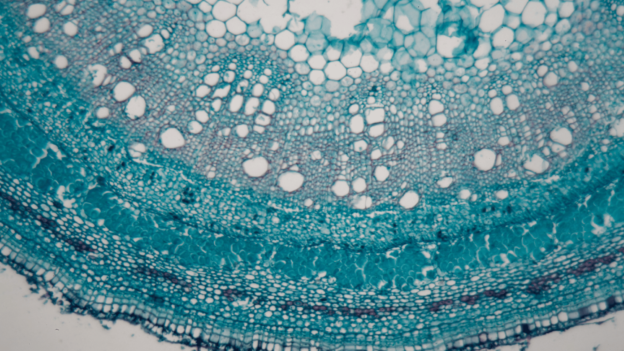Plant Stem Cells: What Are They, and Are They Worth the Hype?
Some of the newest cosmetic additives to hit the market are plant “stem cells”. They are an extremely hot ingredient, and you may find your customers requesting products that contain them. Just what are plant stem cells? What do they offer cosmetics, and do they actually do anything? Let’s take a deeper dive.
Plant stem cells are cells that are “undifferentiated”. They haven’t yet become specialized cells, and just like the stem cells in humans, they have the ability to transform into whatever (plant) cells that might be in need of repair. Unlike human stem cells, plant stem cells never age. They constantly create new stem cells, providing an endless source of new specialized cells while growing at the factory. This characteristic is primarily what first sparked their interest in cosmetics, as we don’t have to kill the plant to harvest them; we just have to sample the plant, and then we can keep that cell line alive by using special culturing techniques. It’s a very sustainable practice and allows us to use rare, even endangered plants in skincare without worrying about decimating the world’s supply of rare plants.
Plant stem cells are usually added to skincare products to take advantage of their high antioxidant activity. Our skin is constantly under oxidative attack which degrades connective proteins and leads to aged skin. By adding plant stem cells to a product, we can extend the life of our skin cells. The stem cells contain compounds known as phenolics, which are known to be rich in anti-inflammatory and anti-aging properties. It all starts with a chemist tenderly removing a small amount of plant tissue from the host plant and transferring it to a growth medium where the cell sample can happily flourish. In a way, you can think of it as “copying” the original plant. We’ve had some initial success. Below are some examples of plant stem cells currently being used in cosmetics.

Swiss apple stem cells: these are obtained from a rare Swiss apple. They protect the skin’s own stem cells, help to slow down the aging process of the skin, and promote the regeneration of skin cells. This is useful in skin-repair situations as well as in products where aging skin needs protection from free-radical oxidation.
Another example is argan stem cells. Argan oil is already a popular exotic oil used in some conditioning products. By extracting Argan stem cells and adding them to a cosmetic, they can penetrate the skin and boost the capacity of our own skin (dermis) to regenerate. This helps to produce younger, healthier skin that is less damaged.
Grape stem cells are yet another example. They are primarily used to protect the skin from the damage caused by ultraviolet light. When combined with Edelweiss stem cells, this can result in long-lasting elastic skin with a reduced appearance of wrinkles.
Sometimes things sound too good to be true, and there is reason to be cautious when considering the use of plant stem cells in cosmetics. The true value of plant stem cells is currently under debate, with researchers trying to find definitive answers. It’s clear that stem cells have antioxidant properties, which we know to be valuable in cosmetics. Antioxidants can help prevent premature aging. Some studies have found that plant stem cells can stimulate human stem cells, helping to regenerate fresh skin components that were lost due to the aging process.
However, our skin is designed to be a barrier. Many molecules find it difficult to penetrate. There is significant debate regarding whether plant stem cells can penetrate deeply enough to reach their intended targets and deliver their promised benefits. Also, plant stem cells aren’t cheap. For brands targeting low to mid-level cost entry, they may not have enough proven benefits to justify the cost.
My suggestion would be to treat plant stem cells as potentially valuable but in need of further research. They sound futuristic and amazing, but as with all new cosmetic additives that are promising to be “the next big thing”, it’s important to remain skeptical and lower expectations so as to avoid being disappointed. Plant stem cells have the promise to be a valuable addition to skin care products, but even if their properties are conclusively proven, they’re not a “silver bullet” for aging skin. As always, formulators must carefully address the issue of aging skin from multiple directions using multiple biochemical pathways.
They do sound very appealing, though!

